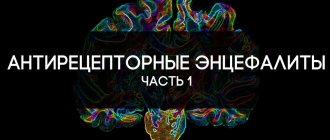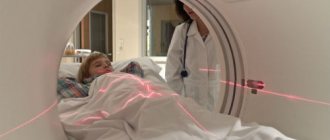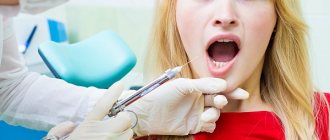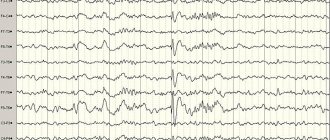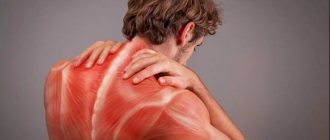Polio
— (infantile spinal paralysis) is an acute infectious disease of viral etiology, characterized by a variety of clinical forms. The causative agent is poliovirus hominis, from the picornavirus family. In most cases, it occurs with mild symptoms, when the only way to find out about the disease is laboratory testing. In special cases, the virus enters the central nervous system, where it multiplies in motor neurons, causing their death. This process leads to irreversible paresis and paralysis (1 case per 200 identified patients, WHO statistics).
The peak incidence occurs at the end of summer - beginning of autumn. Picornavirus affects children under 5 years of age. Previously, there were three types of the virus, today, thanks to vaccination, only type I remains in nature. Since 1988, the number of cases of infection in the world has decreased by 99%, but the risk of getting sick still exists. The disease continues to be reported in Africa and southern Asian countries. As a rule, this is a “wild” virus that arose in natural conditions.
What does the analysis determine, what antibodies to COVID19 are tested for?
A blood test for antibodies reveals 2 types of immunoglobulins - proteins that the body produces in response to infection:
- IgM antibodies are the first to appear in the blood of an infected person, from the moment of infection, as a reaction to the virus, and help fight the infection. Their identification means that the person is currently infected. In the first days, the concentration is low, so it may not be detected in a blood test. By the fifth day, the content increases, determined during testing.
- IgG antibodies are produced later, after the tenth day of the disease. The maximum concentration is determined by the fourteenth day, then decreases. These are memory immunoglobulins; with their help, the body remembers the encounter with the virus. The presence of G antibodies means that a person has already encountered a coronavirus infection and has developed immunity.
Causes of polio
The virus is transmitted through household contact and airborne droplets, through unprocessed food and contaminated water. The main source of infection is a sick person. Insects can also transmit the virus. During the first days, he releases the pathogen with exhaled air, when he sneezes and coughs. Then with bowel movements, this period lasts from several weeks to months.
Picornavirus has a single-stranded RNA, size from 27 to 30 nm. Resistant to gastric juice, external environment and sub-zero temperatures. In water it remains viable for up to 100 days, in feces for up to 6 months. Concentrated chlorine preparations can inactivate the virus, kill ultraviolet radiation and a temperature of +50 C for 30 minutes. Modern antibiotics are unable to destroy the virus.
The pathogen enters the body through the nasopharynx. Initially multiplies in lymphoid tissue (tonsils). Then it enters the intestines, blood, and in especially severe cases, the central nervous system. The incubation period lasts from 3 to 35 days, after which symptoms of the disease may appear.
Risks of vaccination
With the invention of the vaccine, it was possible to save a large number of children from the disease and its complications. However, along with this, a new method of infection has emerged with a virus called vaccine-derived polio. The official name is circulating vaccine-derived poliovirus (cVDPV). For its occurrence, it takes time (about 12 months) from the moment of vaccination and certain conditions. The attenuated vaccine virus strain can be transmitted naturally from a vaccinated person to an unvaccinated person. In new carriers who have not been vaccinated, it mutates to the point that it becomes capable of causing paralysis. This can be avoided through universal vaccination.
There is a risk of developing the disease as a result of vaccination if it was carried out in a premorbid state. In an organism that is on the verge of a healthy and painful state, the protective and adaptive forces of the immune system are sharply weakened. This is the main factor in the development of poliovirus inside the body. Therefore, it is important to monitor the child’s condition before and after the vaccine, and only vaccinate a completely healthy person.
What does antibody testing do?
There are two types of blood tests for COVID-19:
- Qualitative. Express testing only detects the presence of antibodies in the blood.
- Quantitative. Laboratory diagnostics ELISA (enzyme-linked immunosorbent assay) also determines the content (titer) of antibodies in the blood plasma.
Quantitative analysis is more informative; based on the concentration and ratio of immunoglobulins, it allows one to determine the stage of the disease - whether it is just developing or declining.
Additionally, it is recommended to undergo PCR testing to determine the virus itself. The study detects Covid-19 DNA in human biological material (oropharyngeal swabs) from the first day of infection.
Treatment
The initial diagnosis is made by a pediatrician or emergency physician. Further observation is carried out by an infectious disease specialist and a pediatric orthopedist. Depending on the nature of the lesion, a neurologist, cardiologist, gastroenterologist and other specialists may be involved.
The development of clinical symptoms similar to polio requires immediate hospitalization of the child. The first thing to do is to ensure bed rest and complete rest. It is necessary to fix the limbs in the correct physiological position. Prescribe a high-calorie diet, taking ascorbic acid and B vitamins. Drug therapy is symptomatic (palliative) therapy aimed at eliminating individual manifestations of the disease.
All research should be kept to a minimum. It is necessary to protect the patient from physical and psychological stress. There is no specific treatment for polio. As a rule, the patient remains in isolation in the hospital for 40 days. Then comes the recovery period.
An important role is played by rehabilitation therapy carried out by an orthopedist, physical therapy doctor, physiotherapist and other specialists. In some cases, surgery may be required to correct residual deformities. The rehabilitation program includes physical therapy courses, water treatments, massage, electrical myostimulation, and physiotherapy. Spa treatment is recommended.
What does the analysis show, what does decoding the results mean?
- For IgM antibodies. A positive answer means the person is infected in the acute stage. Negative - absence of Covid-19 or late stage when antibodies are no longer produced. Confirmed by PCR test.
- For IgG antibodies. A positive answer is an infection in a late stage or an already suffered disease with the development of immunity. Negative - there was no infection or the disease was in an early stage. Confirmed by PCR test.
Only a doctor knows how to correctly decipher test results. You cannot draw conclusions on your own. Only a specialist can compare the received data and figures, on the basis of which a conclusion can be made about what result is normal. In case of doubtful tests for the presence or absence of antibodies, repeated testing is prescribed; additional PCR research is required.
Symptoms of polio
Manifestations of the disease are directly related to the localization of the virus and the severity of damage to the body. According to official world statistics, about 95% of cases are asymptomatic or with minor pharyngitis and gastroenteritis.
General symptoms include:
- Temperature rises to +40 C.
- General malaise, weakness.
- Loss of appetite, nausea, vomiting.
- Pain in muscles, throat, head.
- Runny nose and cough.
In the non-paralytic form of the disease, the symptoms gradually weaken and disappear completely after 1 - 2 weeks. Paralytic form, the most severe, dangerous to health and life (the remaining 5% of cases). At the beginning, the disease has similar symptoms. Only, unlike non-paralytic polio, they do not go away, but intensify. These are accompanied by symptoms such as:
- Emotional instability, anxiety, irritability.
- Rigidity (numbness) in the muscles of the back and neck.
- Leg pain.
- Involuntary contractions of muscle fibers without subsequent movement.
- Sensitivity disorder, tingling sensation, goosebumps.
Symptoms may vary depending on the form of polio, the severity of the course, and the presence of concomitant diseases. For example, pathological processes in blood vessels and perivascular spaces lead to the appearance of a rash. Myocardial damage leads to significant fluctuations in blood pressure. Damage to motor muscles and centers first causes atrophy, and then paresis and paralysis.
In what cases is a study prescribed?
Sometimes doctors encounter patients whose medical records do not contain information about vaccinations for some reason. Someone may fall behind the vaccination schedule and miss important stages of immunization. In such cases, it is necessary to find out whether a person’s blood contains antibodies to pathogens of dangerous diseases. This determines whether the patient needs additional vaccinations and when it is appropriate to vaccinate.
Parents are often worried that their child may become infected in a child care facility (kindergarten, nursery, school) from other children vaccinated against polio with a live vaccine. They want to find out whether their child has immunity against this disease and, accordingly, how high the risk of infection is. In recent years, there has been a growing trend among some "advanced" parents to avoid vaccinating their children. For some reason, this category of parents is convinced that vaccinations are harmful, not always correctly comparing possible complications with the risk of contracting a dangerous disease. However, in the future they put not only their children in danger, but also the children with whom their children communicate.
The danger of polio, meanwhile, has not been disputed by anyone for a long time. This disease kills about 5% of those affected and makes 25-30% disabled for life.
An antibody test may be prescribed for diagnostic purposes when a disease is suspected. If the disease has already been detected and the patient is prescribed treatment, an immunoglobulin test helps control this process.
Preparing for testing
In order for the test results to be correct, you need to prepare for them. 3 hours before taking a swab from the oropharynx for the presence of SARS-CoV-2, you should not eat or drink, chew gum, rinse your mouth, or smoke.
It is necessary to prepare in advance for donating blood to determine antibodies:
- The day before testing, refrain from drinking alcohol, avoid intense exercise, and do not take medications. Discuss the possibility of safely stopping medications with your doctor first.
- Eat dinner the night before, but remember to allow at least 8 hours between your last meal and testing. Dinner is light with the exception of fatty foods.
- It is advisable to donate blood in the morning on an empty stomach. You cannot eat on the day of the test. You can drink still water in any quantity.
- Do not smoke or overexert yourself for 1-2 hours. No need to run or quickly climb stairs. Try to rest and calm down.
Do not schedule testing immediately after an ultrasound or x-ray, massage, physical therapy, or other medical procedure.
Note! You can get tested for coronavirus in our clinic if you have not had contact with anyone infected with Covid-19 for 2 weeks and have not noticed signs of ARVI in yourself over the past 5 days.
Prognosis and prevention
Polio cannot be cured, but it can be prevented. The only way is vaccination with mandatory compliance with the requirements for preventive vaccinations.
Vaccination against polio is included in the national compulsory vaccination calendar in Russia. It is carried out preorally in several stages. The first vaccination is carried out at 3 months, the second at 4.5 months with an inactivated (thermally killed) vaccine, at 6 months (third vaccination) with a live vaccine. Revaccination is also carried out in several stages: the first at 18 months, the second at 20 months, the third at 14 years (live vaccine). Proper vaccination and revaccination in a timely manner can protect a child for life.
How are antibodies formed?
The formation of antibodies is the coordinated work of several types of cells of the immune system. Once a pathogen (antigen) enters the body, it is absorbed by macrophages. The latter process the antigen into a form that becomes visible to T lymphocytes (this is how the antigen becomes immunogenic). The antigen then breaks away from the T lymphocyte along with its receptor and reattaches to the macrophage. At this stage, B lymphocytes are activated, which under such circumstances turn into plasma cells that produce antibodies.
Already in the first week of coronavirus disease, class M immunoglobulins (IgM) are formed. This is the first line of antibody defense. The purpose of these immunoglobulins is to bind and neutralize as many viral particles as possible. However, hastily made antibodies are not highly specific to viral antigens. Therefore, IgM does not always accurately find and bind the desired antigen.
After 3-4 weeks, IgM disappears and is replaced by immunoglobulin G (IgG). This is a more advanced weapon against the pathogen. For coronavirus infection, it has been shown that IgM can persist for up to 3 months. Perhaps this indicates that the virus remains in the body for a relatively long time.
During the acute period of infection, immunoglobulin A (IgA) is also produced. These antibodies specialize in protecting the mucous membranes, the entry point of the virus.
How long do antibodies last?
This is one of the most discussed issues since the start of the pandemic.
In the first months, there was evidence that immunity after illness lasts only 2-3 months, after which you can get sick again. But this information was quickly denied. Cases of re-infection are extremely rare. Both cellular and humoral immunity are triggered here. As for the “survivability” of immunoglobulins G, the data are contradictory and apparently individual; they persist from 3-4 to 9 months after an illness or vaccination. This is evidenced by the latest research published in Nature Communications⁴.
What is the "positivity rate"?
Semi-quantitative tests are used in most cases to determine antibody levels after vaccination. They do not show the exact amount of antibodies formed. But with their help, you can assess the intensity of the immune response - by the brightness of the sample, if the test is carried out using the enzyme-linked immunosorbent assay (ELISA).
Tests from different manufacturers have different scales. In most cases, state laboratories use Vector-best test systems, and their cut-off level is 1. That is, if the indicator is lower, there are no antibodies. From 1 to 1.1 is the so-called gray zone. If the result is higher than 1.1, it means that we have a strong positive reaction of the immune system.
The “positivity rate” shows how many times the level of antibodies in the sample exceeds the threshold level for their recognition. So, for example, the indicator of 15, which the president recently spoke about, is a good result. The majority of those vaccinated with Sputnik V or CoviVac have approximately the same or even higher rate of positive immune response.
At the same time, I would like to note once again that other test manufacturers may have a different scale and, accordingly, different indicators. At the same time, when you receive the test result in the laboratory, you can always see the reference values on the form and compare the result with them.
Sergey Malgavko/TASS
What documents are needed for analysis?
Take your passport and compulsory health insurance with you. Additionally, you will need information about your place of work and the legal address of your employer. If you are planning to test your children, bring your birth certificate and compulsory medical insurance policy.
If the laboratory test result for coronavirus is positive, we will transfer the data to Rospotrebnadzor. The agency uses this information to contact the patient, establish a circle of contacts and take anti-epidemic measures.
These conditions apply to tests for the detection of viral RNA and IgM immunoglobulin. To determine the presence of IgG antibodies, documents are not needed.
How to prepare your child for testing
2-3 days before the test, it is advisable to eliminate physical and emotional stress. It is also recommended not to carry out physical therapy procedures the day before blood sampling.
A small child needs to be prepared mentally, given that taking a blood test from a vein is not the most pleasant procedure. If blood from a vein is donated for the first time, the baby may experience fear. Parents should try to adjust the child accordingly. Maybe even include some game moment, maybe persuade you to be patient if a needle pricks - there can be many options. But, in any case, the child’s panic will only prevent the nurse from performing manipulations.
Detailed description of the study
Normally, immunoglobulins, or antibodies, serve to protect against microorganisms, foreign substances and their possible negative effects on the body. Antibodies are synthesized by a special type of lymphocyte - plasma cells and are divided into five main classes, which are usually designated as IgA, IgG, IgD, IgE and IgM. They differ in their structure, concentration in the blood and functions performed.
In autoimmune diseases, the body produces pathological immunoglobulins (autoantibodies). They trigger a cascade of reactions aimed at destroying their own cells and tissues. The reasons and exact mechanisms of this process are not fully known. However, there are a number of predisposing factors, which, for example, include genetic predisposition: the presence of autoimmune pathology in blood relatives.
Antinuclear factor is a group of antibodies to components of the cell nucleus, which serves as a marker for the presence of autoimmune diseases. Which include:
- Systemic lupus erythematosus (SLE);
- Sjögren's syndrome;
- Systemic scleroderma;
- Mixed connective tissue diseases (MCTD), or Sharp's syndrome;
- Inflammatory myopathies (polymyositis, dermatomyositis).
The study consists of identifying pathological immunoglobulins that interact with the components of the cell nucleus: DNA, RNA and proteins. Therefore, these immunoglobulins are called antinuclear antibodies (ANA), and their combination is called antinuclear factor (ANF).
The peculiarity of the test is that a special culture of HEp-2 cells, originally obtained from laryngeal cancer cells, is used as a substrate for the immune response. HEp-2 cells have a large nucleus that is clearly visible under a microscope and are always located on glass slides in one layer.
During the study, 6 types of luminescence were identified: homogeneous, peripheral, speckled, reticulated speckled, discrete speckled and nucleolar. The nature of the glow reflects the presence of different types of antinuclear antibodies. The type of antibody glow is associated with one or another rheumatic pathology, and therefore makes it possible to clarify the diagnosis.
Determination of antinuclear factor using a special culture of HEp-2 cells and determination of 6 types of luminescence is necessary as part of a diagnostic search for suspected rheumatological diseases. For a number of diseases, this test is considered as one of the mandatory diagnostic criteria.
The sensitivity of the method for detecting rheumatic diseases has a high percentage, which for systemic lupus erythematosus is 93%.
In the Hemotest laboratory, the antinuclear factor on the HEp-2 cell line with the determination of 6 types of luminescence is determined using modern and accurate equipment and is quite affordable.
